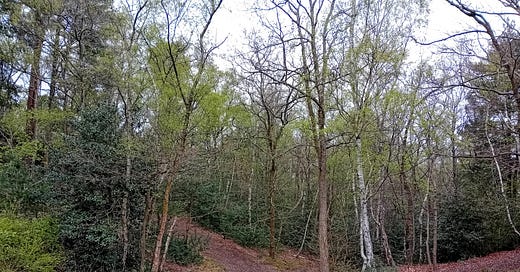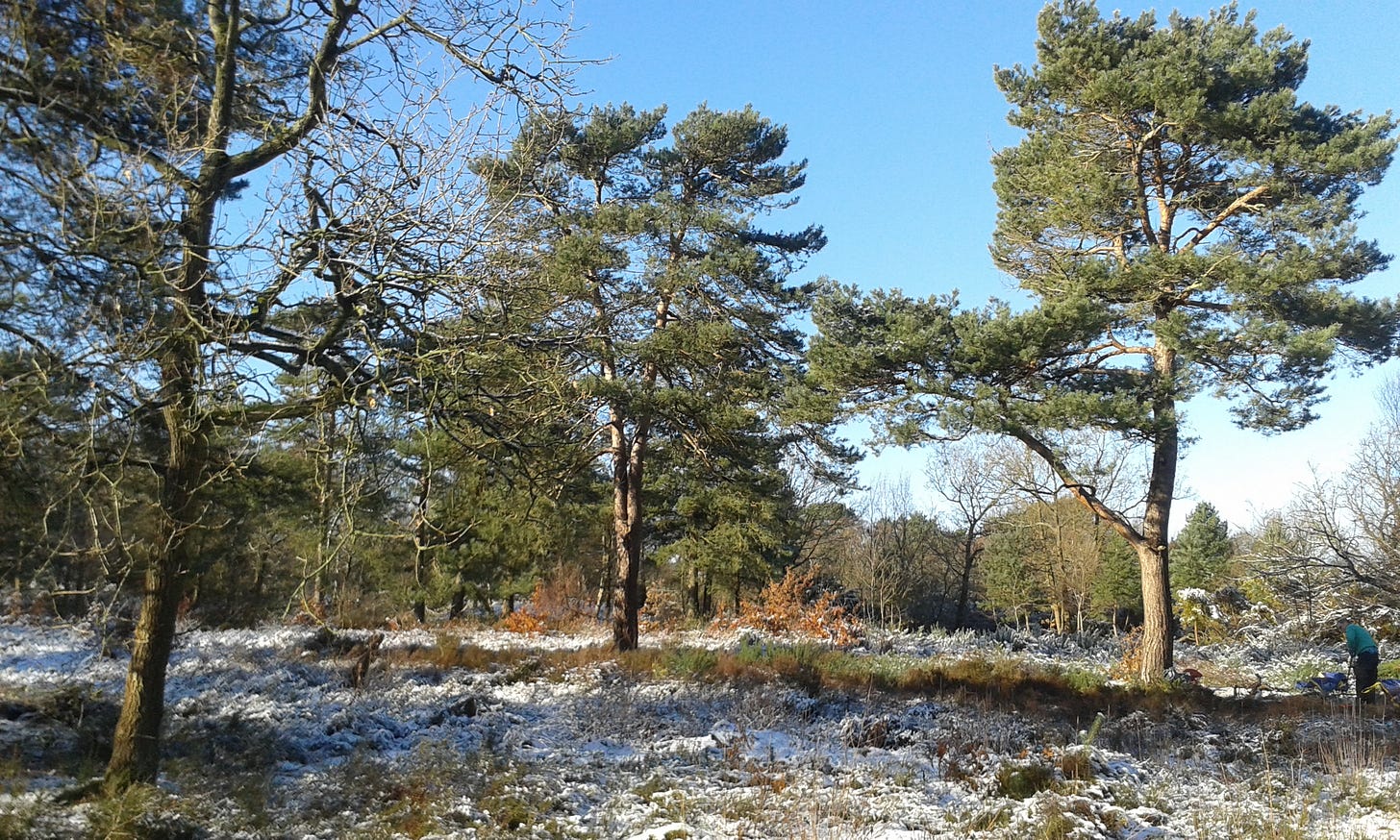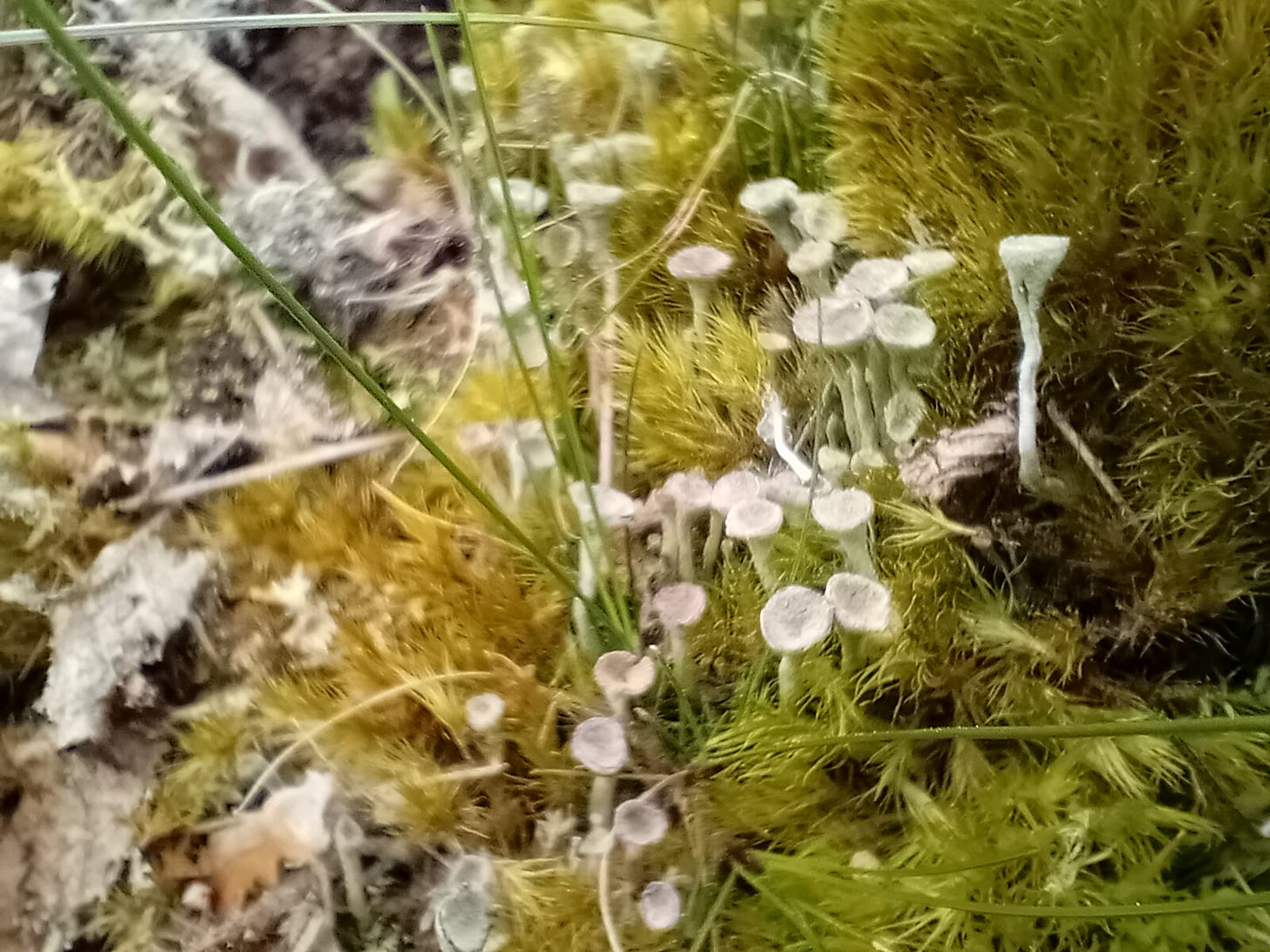One fine Spring morning in March 2011, I stood waiting with a small group of people outside Croydon Crown Court. We were waiting for a lift rather than a court case, and by the time the minibus arrived there was only just enough space for us all to squeeze on. This was the era of mass redundancies as the repercussions of the 2008 financial crisis hit the public sector in earnest and volunteering was proving popular with those like me who suddenly had more time on their hands. On that first outing with BTCV (British Trust for Conservation Volunteering) we went to Addington Hills and I’ve been back many times since. Although I had been there before to visit the viewing platform which provides a panoramic overview across London, it is only since I started volunteering that I have really got to know the area.
Addington Hills consists of a mixture of heathland and steep-sided wooded valleys, a type of habitat that is unusual in London and very different from the woodlands and meadows where we do most of our volunteering. It’s an amazing place at any time of year, and particularly so in summer when the heather is blooming, but as the place where I first started getting very involved in conservation volunteering it will always be very special to me. I’ve volunteered here on blazing hot summer days when the ground is tinder dry and we’re all keen to find shaded areas to work in and on one memorable winter’s day when an unexpected snowfall completely transformed the area. Our tasks here usually focus on removing some of the gorse and self-seeded trees to allow the heather which covers part of the heath to flourish. Without this work, the quick-growing species, like birch, would soon dominate the area. It is always very satisfying to spot shoots of young heather returning in areas we’ve cleared in previous years, even though it sometimes feels a little strange to be removing trees when so much of our other work is about helping them to grow.
I was back at Addington Hills again yesterday on a day when the weather proved to be warmer and slightly less cloudy than forecast – a great day to be out volunteering. Much of our conversation was about the recent controversy sparked by news that Addington Golf Club had been asking local residents what they thought about the idea of creating a driving range and irrigation pond on part of Shirley Heath, another open space nearby. In return for being allowed to do this, the Golf Club proposed to take over the management of both Addington Hills and Shirley Heath.
According to the Golf Club’s consultation leaflet, these areas are currently “unmanaged”, a description that completely ignores the thousands of volunteer hours that have gone into caring for Addington Hills over the years. That’s not the only indication of their complete failure to understand the value of somewhere like Addington Hills, and of how this kind of area needs to be cared for. Not only do they refer to these stretches of semi-wild green spaces as “parks” but they also suggest that management by the Golf Club would allow for the introduction of new footpaths and cycleways and a range of other “improvements” such as outdoor gyms and formalised sports pitches in order to make the area “more usable”. It’s true that some of the steep, pebbly paths at Addington Hills are tricky for the less sure-footed but much of that is down to the topography which it would be impossible to address without major intervention. Parts of Addington Hills – the viewing platform and flatter areas near the car park - are very well-visited, and it’s the fact that there are other parts which are less accessible which makes the area particularly valuable for wildlife.
Rather than being “unmanaged”, the land at Addington Hills has been cared for in a way which ensures the mix of trees and heathland can provide a welcome for a wide range of species. In spring and summer, we always see lots of butterflies and bees here and on the hottest days we often get occasional glimpses of lizards. When the sun put in an appearance yesterday, I spotted a couple of Peacock butterflies and a Brimstone or two, and every now and then a Buzzard circled overhead. We also found a small patch of tiny, delicate Elf Cup fungi. There are bats too apparently although I’ve never been there at the right time to see them.
The area’s popularity with human visitors meant that news of the Golf Club’s intentions quickly generated significant levels of opposition resulting in thousands of people signing a petition opposing the plans. Now the Elected Mayor of Croydon, Jason Perry, has issued a written statement, setting out very clearly that the Council has no intention to sell or lease the land to the Golf Club, and implying that the whole controversy has been deliberately stirred up by his political opponents. He does however acknowledge that he discussed the proposals with the Golf Club as part of a regular meeting with developers and at a subsequent site visit. And it seems those discussions must have given the Golf Club enough reason to believe it was worth going to the effort, and expense, of testing their proposals with local residents. Whatever the truth of the matter, the events of the last couple of weeks have shown very clearly that people want places like Addington Hills to be cared for in a way that ensures they are valuable for both people and wildlife and not “managed” as “parks”. The whole incident also demonstrates just how important it is for those of us who care for our wilder places, to continue to defend them against those who fail to understand their value.
To finish….
…only one thing to share this week as I’ve been very busy:
National Parks Health Check Report: The focus of Stories of Coexistence is my volunteering experiences in London, and I don’t usually write about what I’m doing in my paid work for Campaign for National Parks. But this is such an important report and it’s production and this week’s launch has been a big part of my life recently, so I wanted to share it here. The report includes an assessment of the state of nature in the National Parks of England and Wales and concludes that even in these special places, wildlife is really struggling and needs urgent help to get back to full health. There is a good overview of the changes we’re calling for in this Guardian article by Patrick Barkham and you can help us achieve these changes by calling on your MP to support them.







An interesting post., glad there was a positive outcome. We had a situation locally where an area of farmland and a small nature reserve had been earmarked for a golf hotel resort. It didn’t go ahead, it was unclear why - access issues, funding, opposition by locals? But more recently the council has announced the same area, including the nature reserve, will become wetlands, changing the usage of farmland which was constantly flooded. Small glimmers of good news 💚
Thanks, Ruth, for a very clear explanation of what was going on - I'd heard rumours! Addington Hills is a place to be treasured for what it is.